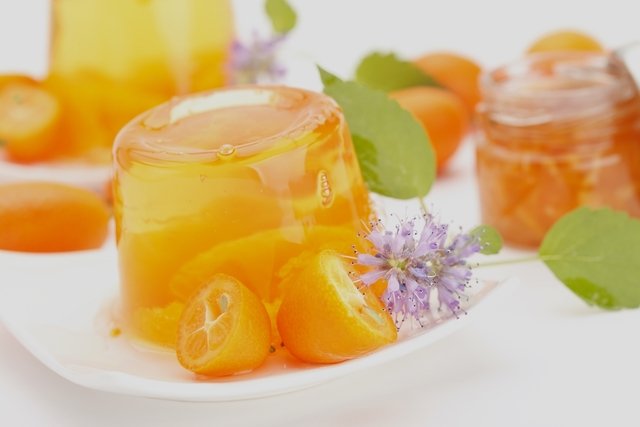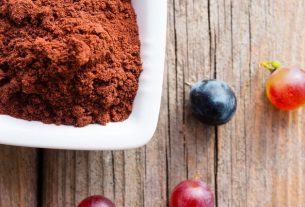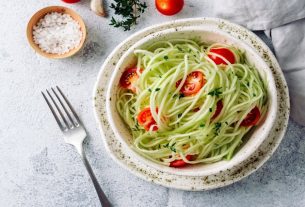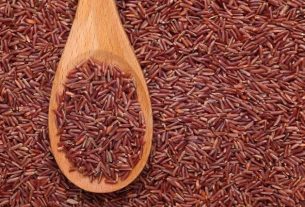Gelatin is not fattening as it has no fat, is low in calories, especially the diet or light version which does not contain sugar, has a lot of water and is rich in amino acids and is an important source of protein, which is essential in weight loss diets as they help to increase satiety and control hunger, being a good ally in weight loss.
Some studies show that glycine, the main amino acid in gelatin, helps reduce blood sugar levels by stimulating insulin production, which is very useful for combating obesity and the complications of being overweight, such as diabetes, for example. Furthermore, the amino acids and proteins in gelatin help maintain muscle mass, which increases the body’s metabolism and promotes weight loss, as muscles have a higher metabolism than fatty tissues.
A good way to increase your gelatin consumption is to eat a bowl of gelatin between main meals or as a dessert, as an alternative to sweets.
Watch the video with nutritionist Tatiana Zanin who clarifies the main doubts about gelatin:
Benefits of gelatin
Gelatin has many health benefits, not only for weight loss, but because it contains amino acids such as glycine and proline, which stimulate the production of collagen in the body, which contributes to:
- Strengthen bones and joints;
- Reduce skin sagging;
- Slow down aging;
- Reduce the formation of wrinkles and expression lines;
- Prevent the formation of cellulite;
- Strengthen the nails;
- Increase hair growth and shine;
- Increase the feeling of satiety;
- Regulate bowel function;
- Combat constipation.
Furthermore, gelatin is also an excellent source of hydration due to its high water content, which maintains the firmness of skin and hair.
It is important before consuming gelatin to check whether the preparation contains dyes, as for people allergic to dyes, this type of gelatin can cause allergy symptoms such as itching throughout the body, diarrhea, vomiting or difficulty breathing, for example. In this case, it is recommended to consume only colorless, flavorless gelatin in powder or leaf form, or agar-agar gelatin.
To obtain the benefits of gelatin and increase collagen production, consumption must be daily. Check out other ways to increase collagen consumption in your diet.
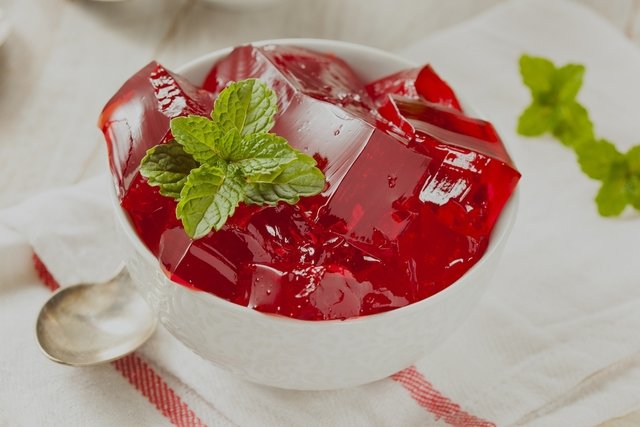
Nutritional information table
The following table shows the nutritional composition for 100 grams of gelatin of animal origin, in powder or sheet form, and of vegetable origin in powder form.
It is important to highlight that to obtain all the benefits mentioned above, gelatin must be part of a balanced and healthy diet.
How to consume
To consume gelatin, a good option is to use it in unflavored powder form or gelatin sheets, which are gelatin options of animal origin but more natural, without dyes and rich in proteins, and can be prepared by adding fruits such as apples, strawberries, peach or pineapple pieces in hot water, before making the gelatin, making the gelatin even more nutritious.
Another option is agar-agar gelatin, which is of vegetable origin, made from seaweed, and can be consumed by vegetarians and vegans. This gelatin is not a good source of collagen but is rich in fiber, helping to regulate the intestine and increasing the feeling of satiety. It also yields more than regular gelatin and does not alter the flavor of food when used in recipes such as cakes and desserts, for example.
Healthy gelatin recipes
Some quick, easy to prepare and nutritious gelatin recipes are:
Fruit salad gelatine
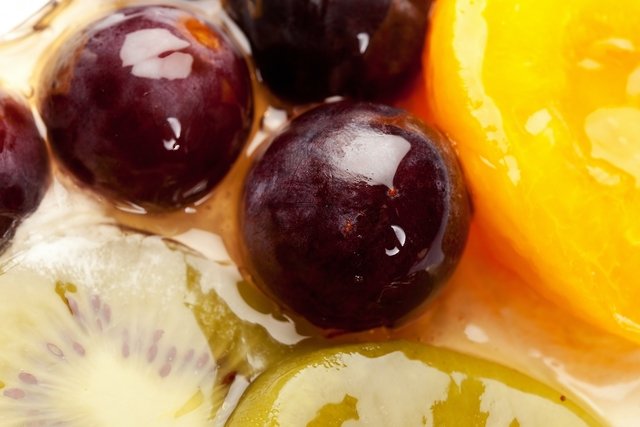
A good dessert option is gelatin with fruit, which is more nutritious and can be consumed for breakfast, dessert or as snacks between main meals.
Ingredients
- 3 sheets of unflavored gelatin;
- 1 skinless peach, cut into cubes;
- 3 pitted dried plums;
- 1 banana cut into slices;
- 12 seedless white grapes cut in half;
- 80 g of ripe melon cut into cubes;
- Juice of 2 strained oranges.
Preparation mode
In a bowl or pyrex dish, place the mixed fruits. Place the gelatine leaves in a bowl of cold water to hydrate for 5 minutes. Drain the water and add 1 tablespoon of boiling water to the gelatine leaves, mixing well until the gelatine leaves are completely melted. Another option is to melt the gelatin sheets for 10 to 15 seconds at full power in the microwave. Add the orange juice to the bowl containing the melted gelatin sheets and mix. Pour this mixture over the fruits, mixing well and refrigerate for 3 to 4 hours.
Agar-agar gelatin
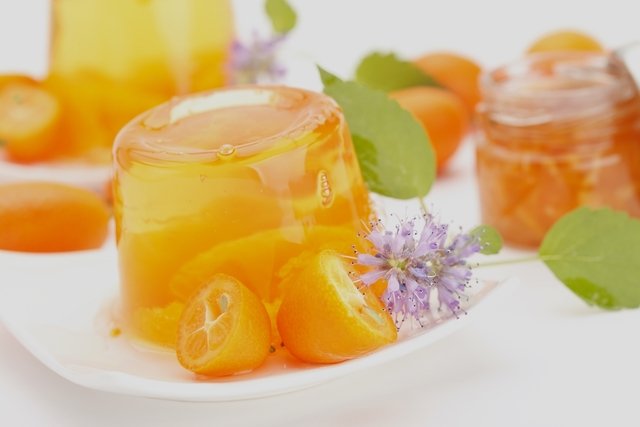
Agar-agar gelatin can be used to add consistency to recipes or prepared with fruit for dessert.
Ingredients
- 2 cups of assorted fruit cut into pieces;
- 2 tablespoons of agar-agar gelatin powder;
- 3 tablespoons of peeled apple juice;
- 1 teaspoon of cinnamon powder;
- 1 liter of water.
Preparation mode
In a mold, add the chopped fruits, apple juice and mix. Place the water in a bowl to heat, add the agar-agar gelatin and boil for 5 minutes. Let it cool and add the cinnamon powder. Pour this mixture into the mold containing the fruits and refrigerate for 2 to 3 hours.
Ball of gelatin

This jelly candy recipe is very simple to make and is very healthy, and can even be consumed by babies over 1 year old.
Ingredients
- 1 package of flavorless, colorless gelatin;
- 2 packets of regular gelatin;
- 200 mL of water.
Preparation mode
Mix the ingredients in a pan and bring to a simmer, stirring constantly for about 5 minutes. When it is uniform, turn off the heat and pour the liquid into acetate or silicone molds and refrigerate for about 2 hours. When the gelatin has a firm consistency, remove it from the mold.

Sign up for our newsletter and stay up to date with exclusive news
that can transform your routine!
Warning: Undefined array key "title" in /home/storelat/public_html/wp-content/plugins/link-whisper-premium/templates/frontend/related-posts.php on line 12
Warning: Undefined array key "title_tag" in /home/storelat/public_html/wp-content/plugins/link-whisper-premium/templates/frontend/related-posts.php on line 13

